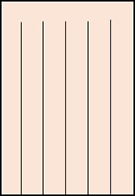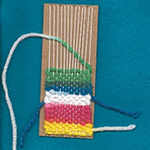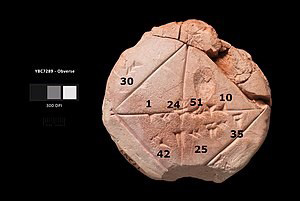A while ago I wrote a blog about some of the ways you can approach proving the Pythagorean theorem. Since then I’ve been reading additional papers and came across a beautiful gem – and indeed I think my new maths hero!
Have you ever heard of Professor Paulus Gerdes? He dedicated his life to what was the new People’s Republic of Mozambique, now known in the present day as Mozambique. Teacher, manager, administrator, and advisor to a succession of ministers of education, he was also a respected professor of mathematics with specialisms in geometry and the culture and history of maths.
Professor Gerdes was an ethnomathematician. Ethnomathematics involves the study of those forgotten in the history of mathematics, recognising and suggesting evidence for the view that this knowledge should play a role in maths education. The work of ethnomathematicians contributes to maintaining collective and national cultural memory, and prevents the permanent loss of original, creative ideas in mathematics (Gerdes, 2017).
This work is particularly pertinent when considering the Pythagorean theorem. Just its name (if not your maths lessons) misleads you into believing that this theorem was a new discovery, found and proved by the Greek philosopher somewhere around 500 BCE. In fact, not only is there evidence of an understanding of right-angled triangles all the way back to Babylonian times (circa 2000 BCE), but early proofs in China, amongst other places, may well have been developed independently of Pythagoras’ work. Additionally, a plethora of lovely proofs exist, all the way up to modern day, that have been developed outside the European continent. There is even some speculation (Zitarelli, 2007) that there was some communication between East and West regarding the relationship between similar shapes drawn on the sides of a right-angled triangle – potentially through Pythagoras’ own travels and/or those of Chinese merchants and business people. It feels something of a misnomer calling it “Pythagoras’ theorem” after learning about that – I’ve chosen to move to “the Pythagorean theorem” for now, which still has its drawbacks but at least is widely recognisable.
In 1988, Paulus Gerdes wrote an article for For the Learning of Mathematics entitled “A Widespread Decorative Motif and the Pythagorean Theorem.” It discusses an intriguing and specific geometric motif that has been identified all over the world: an alternating pattern of black and white (in this case) squares, named by Professor Gerdes as a “toothed square.”
Figure 1. Toothed square (Gerdes, 1988, p. 35)
Now what is so mathematically significant about this design? In the paper Professor Gerdes details in depth how the Pythagorean theorem can in fact be discovered and proved using a toothed square. Exciting stuff!
In this particular case you can analyse the black and white design as below:
Figure 2. Equating areas (Gerdes, 1988, p. 36)
Figure 3. Equating areas continued (Gerdes, 1988, p. 36)
Now a question naturally arises: can the toothed square be transformed into a square? If so how? And how would its dimensions relate to the diagram above? Will this work for any right-angled triangle?
A simple manipulation establishes the square of equal area to the toothed square and a simple calculation reveals its side length to be 5 squares. It is worth making sure you can convince yourself of this before you proceed…
Figure 4. Finding a square with the same area (Gerdes, 1988, p. 37)
Now this, for me, is the beauty of this idea: what if instead of squares of equal size in each dissection, you split the two initial squares differently? For example:
Figure 5. Different sized squares (Gerdes, 1988, p. 37)
Importantly, we are not interested in actual numerical measurements, but the relationship between the squares on each side of the right-angled triangle. As you increase the number of little squares the “toothed-ness” of the toothed square becomes less and less obvious, and taking the number of them to tend to infinity we head towards a statement of the theorem itself.
Figure 6. Increasing the number of squares (Gerdes, 1988, p. 37)
The beauty of this idea, from an artistic motif that has been found across the globe, has something quite unifying about it. A proof that can include the idea of tending towards infinity also offers an important alternative perspective. Recognising that mathematics happens across the globe, in multiple guises from multiple viewpoints, each with its own worth and place in any learner’s experience, is a key part of ethnomathematical thinking.
Something to try
KS1:
Follow instructions (written or visual) to have go at paper weaving.

- Using one piece of paper as your loom, cut 2–3cm vertical strips in it up to about 3cm from the top edge
- Cut strips of coloured paper to weave through
- Weave the strips over and under to produce a pattern
- Consider how to weave to make sure you get interesting patterns
- Describe the patterns produced
KS2:
Investigate the maths of paper weaving or weaving on a mini-card loom.

- Weave the yarn over and under to produce a pattern
- Create different patterns by changing the number of strands that you weave over or under. For example, a simple tabby weaving would be over strips numbered (1, 3, 5, 7, …) on row one of the pattern and then over strips (2, 4, 6, 8, …) on row two. This would be repeated. Other patterns include:
- Old Rib: over (1, 2, 5, 6, 9, 10, …) on the first row, then over (3, 4, 7, 8, 11, 12, …) on the second row and repeat.
- Broken Twill: over (1, 2, 5, 6, 9, 10, …) on row one, over (2, 3, 6, 7, 10, 11, …) on row two, over (3, 4, 7, 8, 11, 12, …) on row three, over (1, 4, 5, 8, 9, 12, 13, …) on row four and repeat.
KS3:
Investigate some of the work of Dr. Cedric Chauve and Dr. Veselin Jungic of Simon Fraser University concerning traditional Salish patterns or motifs used in Tla’amin baskets through their Callysto-Salish-Baskets program. Try out some of the interactive tools they have developed (the link requires you to set up a free account), carry out a variety of transformations and design your own basket. An explanation is available here.
KS4/5:
Consider the Yale tablet produced by the Babylonians (1800–1600 BCE). The numbers are written in base 60 (sexagesimal) but it is possible to find an incredibly good estimate for √2.

Source: Wikipedia YBC 7289
References:
Gerdes, P. (1988). A widespread decorative motif and the Pythagorean theorem. In For the Learning of Mathematics, 8(1), 35–39.
Gerdes, P. (2017). Interweaving geometry and art: Examples from Africa. In K. Fenyvesi & T. Lähdesmäki (Eds.), Aesthetics of interdisciplinarity: Art and mathematics (pp. 181-195). Birkhäuser.
Zitarelli, D. E. (2007). Was Pythagoras Chinese? In Hands on History: A Resource for Teaching Mathematics, 72, 41.
Join the conversation: You can tweet us @CambridgeMaths or comment below.